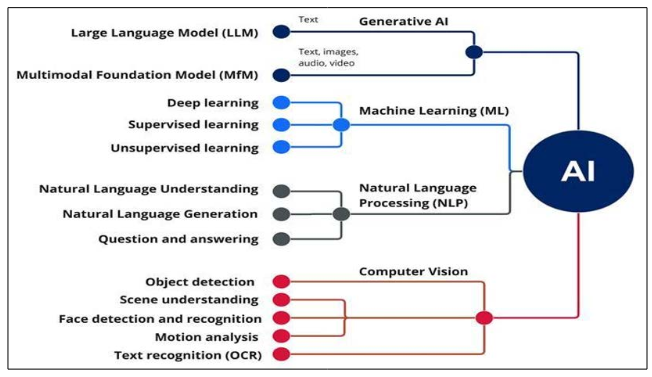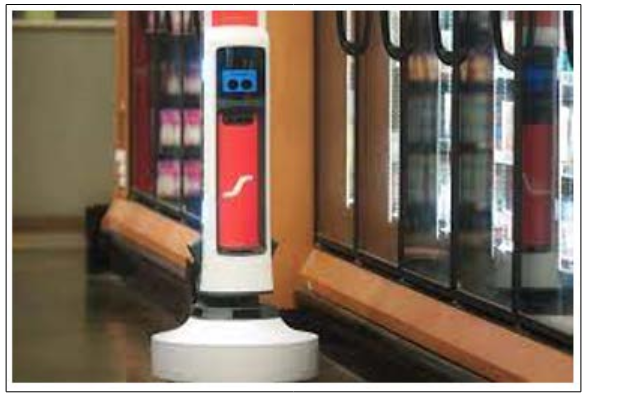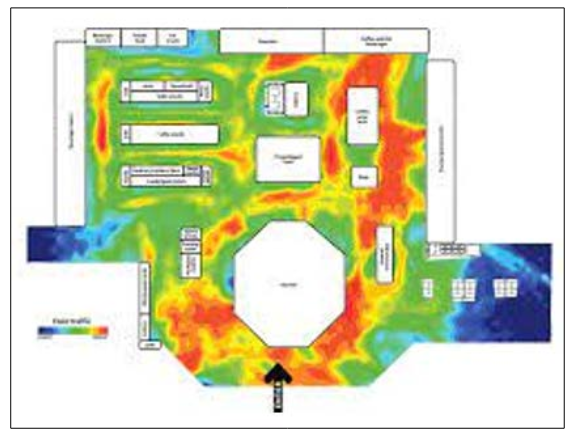Author(s): Nilesh D Kulkarni* and Saurav Bansal
In this paper we provided a perspective on the integration of Artificial Intelligence (AI) and Computer Vision in the retail sector, highlighting their transformative potential in reshaping industry dynamics. It delves into the multifaceted applications of AI in retail, including inventory management, personalized shopping experiences, dynamic outreach, and conversational support, underscoring how these technologies drive customer engagement, operational efficiency, and innovation in product and service offerings. Moreover, the study explores the role of Computer Vision in revolutionizing retail experiences through self-checkout systems, inventory management, store layout optimization, and AI-based loss prevention. Emphasizing the necessity of adopting these technologies, the paper contends that AI and Computer Vision are not mere competitive advantages but crucial for maintaining relevance in the swiftly evolving retail landscape. The strategic integration of these technologies presents significant opportunities for growth and differentiation, although it necessitates substantial investment in resources and workforce upskilling.
Logic-based algorithms represents the core of traditional computer science. For decades, computer scientists were trained to think of algorithms as a logic series of steps or processes that can be translated into machine-understandable instructions and effectively used to solve problems. Logic-based algorithms have derived transformative value over the last 50 years in all aspects of business - from enterprise resource planning to supply chain, manufacturing, sales, marketing, customer service, and commerce [1].
Today most organizations have been trying to digitize their processes for the last two decades, and new technologies such as Industry 4.0 have emerged as a business buzzword, Conversely, computing devices have harnessed the power of artificial intelligence (AI) to enhance their capabilities [2].
The field of AI was reinaugurated in 2000s, driven by the major three forces. First was Moore’s law in action - the rapid movement of computer of computational power. By the 2000s computer scientists could leverage dramatic improvement in processing power, reduction in the form factor of computing with mainframe computers, minicomputers, personal computers, laptop computers, and the emergence of mobile computing devices, and the steady decline in computing costs [3].
AI has long been predicted as one of the prominent technologies capable of allowing communication among devices and machines as well as AI can simplify processes by solving problems at higher levels of speed and accuracy while at the same time managing large volumes of data [4-7].
A significant catalyst for this renewed fervor surrounding AI is the advent of OpenAI’s ChatGPT in November 2022 [8]. ChatGPT, an acronym for Generative Pre-trained Transformer, introduced the public not to AI but to a specific facet of AI - generative AI [9].
This article embark on a comprehensive journey into the realm of Artificial Intelligence, specifically focusing on AI and computer vision. Our primary goal is to highlight the importance of these AI fields and emphasize the critical need for businesses to grasp their capabilities. The aim is to provide organizations with a deep understanding of AI and computer vision, empowering the retail organizations to make informed and strategic decisions regarding the integration of these technologies. This exploration is grounded in the acknowledgment that adopting AI and computer vision is not just a choice but a compelling need, considering a potential to fuel innovation and improve competitiveness in an increasingly technologically advanced world.
The data for this research was sourced from well-regarded academic databases, such as Google Scholar, IEEE Xplore, journals, and studies. We performed thorough searches using keywords like 'Computer vision', ’Industry 4.0’, ‘Smart Shopping, 'Generative AI,' 'Computer vision use cases', ‘AI use cases for retail and 'Generative AI use cases' This method enabled us to uncover a wide array of sources that could potentially contribute to our study.
The retail industry consists of all companies that sell goods and services to consumers. There are many different retail sales and store types worldwide, including grocery, convenience, discounts, independents, department stores, DIY, electrical and specialty stores. The retail industry shows steady growth year on year and employs a huge number of workers worldwide, particularly with the growing popularity of online retail.
The competitive nature of this fast-paced industry was especially pronounced during the past few years. For 2022, retail outlets have been compelled to reconsider their long-standing processes and tactics that have structured the sector for years. These global changes in management and ways of thinking about supply chains for many well-known brands only help prove how important retail sales are for the economy
In an increasingly competitive retail landscape, players in the industry must employ various strategies to capture a portion of the market share. Today, consumers demand top-notch customer service and a unified shopping experience, and the emergence of omnichannel retailing underscores this trend.
Consumers seek to blend traditional shopping practices with the convenience offered by modern technology. They may shop online using tablets or smartphones, or they might visit physical brick-and-mortar stores in person.
Consumer enthusiasm for retail purchases remains strong, necessitating that retailers must provide a seamless and hasslefree experience to stay competitive. This applies to a wide range of retail businesses, irrespective if they operate as market stalls, or are part of the US retail sector, or are internet-based retailers.
As consumers continue to spend within the retail sector, it becomes crucial for brands to maintain competitiveness and uphold service.
The term 'AI' encompasses a broad and intricate realm of nonhuman intelligence, marking a notable departure from conventional computational approaches [10]. It signifies the field dedicated to creating computer systems capable of performing tasks typically associated with human intelligence [11].
In concordance with the succinct articulation by Demis Hassabis, Co-Founder and CEO of DeepMind, AI can be succinctly characterized as ‘‘the science of making machines smart.’’ Fundamentally, AI grants machines the ability to understand natural language, identify complex data patterns, make informed choices, and acquire knowledge through experiential interactions [12]. This replication of human-like cognitive functions enables machines not only to process and interpret information but also to adjust to various contextual situations, progressively improving their performance through continuous learning [13].
In contrast, deep learning, a subdomain nestled within machine learning, harnesses intricate neural networks comprising interconnected layers, drawing inspiration from the intricate synaptic structure of the human brain [14]. These neural networks exhibit an innate proficiency in deciphering complex patterns within data, rendering them particularly well-suited for tasks such as image recognition [15]. The ubiquitous applicability of AI traverses a diverse spectrum of industries, manufacturing, construction, finance, energy, healthcare and primarily for our focus retail [16]. In these domains, AI takes on diverse roles, equipping computer systems with the ability to intricately analyze vast datasets, perform challenging and repetitive tasks with unwavering accuracy, provide personalized recommendations to users, and importantly, emulate human-like interactions through the utilization of chatbots and virtual assistants [17-18].
Despite its historical origins, the recent surge in attention and enthusiasm surrounding AI has led to a noticeable blur in its definition and capabilities. Therefore, to foster a deeper and more insightful understanding of AI's significant role in the modern business landscape, it becomes essential to undertake a comprehensive exploration of the various categories of AI.
In the realm of artificial intelligence categorization, one encounters a variety of algorithms tailored to address particular requirements and confront distinct obstacles. The choice of the most suitable algorithm hinges on the characteristics of the problem at hand, the available data type, and the intended result [20]. Let's explore in greater detail some of the frequently employed categories within AI classification.
At its core, binary classification involves categorizing data into one of two distinct groups, akin to a straightforward yes-or-no decision.
A prevalent example of binary classification is in the context of image recognition. Images can be classified as either containing a specific object or not containing it. For instance, an image classification model might determine whether a given picture contains a cat or not.
Another practical application of binary classification can be found in sentiment analysis for product reviews. Reviews can be categorized as 'positive' or 'negative' sentiments, helping businesses gauge customer opinions and feedback effectively.
Expanding the classification system to encompass more than two categories leads us into the realm of multiclass classification. As the name suggests, 'multi' implies the presence of many, and in this context, it pertains to the numerous categories or classes into which data can be organized.
A notable example of multiclass classification is in the field of natural language processing, where text documents can be categorized into various topics or themes. For instance, news articles can be classified into topics like politics, sports, entertainment, or technology.
Another application of multiclass classification is in the field of medical diagnosis. Patient diagnoses can fall into multiple disease categories, and a machine learning model can be trained to classify them into these different medical conditions based on various diagnostic tests and patient data.
In the context of image recognition, multiclass classification can involve categorizing images of animals into various species, where each species represents a different class. This can aid in wildlife monitoring and conservation efforts.
While binary and multiclass classifications assign data to a single category, multilabel classification allows each data point to be associated with multiple labels. In this scenario, the algorithm assigns multiple descriptive labels to each data point.
For instance, in a product categorization system for an e-commerce website, a particular item like a smartphone could be labeled with multiple attributes, such as 'electronics,' 'mobile devices,' and 'Android.'
In the realm of social media content moderation, a platform may employ multilabel classification to flag user-generated posts that violate its community guidelines. A single post could receive multiple labels indicating the specific rule violations it has committed. For instance, a post containing hate speech, nudity, and spammy links could be labeled with 'hate speech,' 'nudity,' and 'spam,' allowing the platform to take appropriate action based on these multiple violations.
Computer vision is a field of artificial intelligence (AI) that enables computers and systems to derive meaningful information from digital images, videos and other visual inputs - and take actions or make recommendations based on that information. If AI enables computers to think, computer vision enables them to see, observe and understand.
Computer vision works much the same as human vision, except humans have a head start. Human sight has the advantage of lifetimes of context to train how to tell objects apart, how far away they are, whether they are moving and whether there is something wrong in an image.
Computer vision works by enabling computers to understand and interpret visual information from the world, just as the human visual system does. It involves the use of algorithms and models to process and analyze digital images and videos.
Below are the steps involved in Computer Vision processing -
The process starts with the acquisition of digital images or videos. These images can be obtained from various sources, such as cameras, drones, satellites, or digital archives.
Once the images are acquired, they often undergo preprocessing to enhance their quality and prepare them for analysis. Common preprocessing steps include
Computer vision algorithms identify and extract meaningful features from the images. These features could be edges, corners, textures, colors, shapes, or more complex patterns. Feature extraction is crucial for understanding the content of an image.
Extracted features are transformed into a suitable format for further processing. This step involves creating feature vectors or other representations that encode the relevant information from the image.
Many computer vision tasks involve machine learning and deep learning models. These models are trained on labeled datasets to learn patterns and relationships in the data. Common types of models include:
The fundamental concept behind computer vision relies on the skillful use of existing camera technologies to achieve rapid detection and real-time processing of visual data. This encompasses a wide range of visual elements, including individuals, objects, and dynamic events. The inherent proximity of this feedback loop provides businesses with a powerful tool, enabling them to respond swiftly to unfolding situations.
This ultimately leads to significant improvements in both productivity and safety within their operational domains. The practical importance of computer vision becomes notably clear in its ability to meet the growing demand for immediate visual insights across various industries. This makes computer vision an essential asset for enterprises that are actively seeking to optimize and reinforce their operational processes by acquiring real-time visual information.
Figure 1 provides a visual framework for understanding the hierarchy of subfields within the expansive domain of Artificial Intelligence (AI). At the core of AI, it introduces four primary subfields: Generative AI, Machine Learning (ML), Natural Language Processing (NLP) and Computer Vision. Generative AI encompasses various facets, such as text, images, voice, video, and code generation by learning from data patterns, emphasizing its diverse content generation capabilities and its role in identifying anomalies in data. In contrast, Computer Vision encompasses Image Detection, Image Tracking, Image Reconstruction, Image Classification, Motion Detection, and Text recognition (ICR).

Figure 1: Various Branches of AI
The current retail landscape is characterized by a shifting paradigm, emphasizing data-driven retail interactions and elevated consumer demands. However, providing a personalized shopping experience on a large scale, one that remains pertinent and valuable, presents a significant challenge for retailers. With the convergence of digital and physical purchasing avenues, those retailers capable of innovating across their retail channels will distinguish themselves as frontrunners in the market. Below are some examples of how AI in retail can reshape the entire industry.
In conclusion, AI can reshape the retail industry across various dimensions, from enhancing customer experiences to optimizing operations and driving innovation in product and service offerings. The potential for growth and competitive advantage in the retail sector through AI adoption is substantial, as evidenced by the revenue increases observed in brands that offer personalized experiences and leverage advanced digital technologies.
In the rapidly evolving retail industry, the integration of machine learning and automated visual inspection has sparked the development of computer vision-enabled self-checkout systems and innovative solutions. Software companies have recognized the growing demand for these technologies and are now offering various iterations of this concept [21].
A prime example of this innovation is Amazon's Just Walk Out system, which seamlessly combines cameras, sensors, and deep learning. This cutting-edge system empowers customers to select their desired products and exit the store without the need to wait in lengthy payment queues. Remarkably, customers are not required to have an Amazon account or a dedicated app. Instead, computer vision technology leverages cameras to track objects and monitor customers' movements, while shelf sensors identify the removal or return of goods. As customers depart the store, their payment card is automatically charged for the items they have taken.

Figure 2: AI Self Checkout
Another noteworthy advancement in retail technology comes in the form of barcode-scanning smartphone apps. For instance, Guitar Center, one of the world's largest musical equipment retailers, has incorporated features from its well-established online store into its physical outlets. They have introduced a mobile application that enables customers to access product information and reviews by simply scanning an item's barcode with their smartphone's camera. This mobile app allows users to look up product reviews, ratings, explore similar items, and even discover alternative colors for the scanned products.

Figure 3: Barcode Scanning App
Inventory management has also seen a transformative shift with the integration of computer vision. Cameras equipped with this technology can be mounted atop standard retail equipment to alert staff about shelf gaps or misplaced products. This innovative approach frees up shopping floor staff to focus more on providing excellent customer service. Simultaneously, realtime data collected by these cameras can be utilized for retail store analytics. This data enables dynamic responses to product movement, facilitating the repositioning of goods on the shop floor to align with consumer purchasing tendencies. Tally, an innovative mobile robot and inspection system developed by Simbe Robotics, exemplifies this by capturing visual data from over 12 highresolution cameras. Apart from notifying staff about out-of-stock items, Tally can identify damaged packaging, incorrect pricing, and even accompany customers to locate the correct products.

Figure 4: Simbe Robotics
Enhancing store layouts is another area where computer vision technology proves invaluable. Retailers can deploy computer vision cameras to identify high-traffic areas within the store, track customer movement and purchasing patterns, and observe consumer behavior regarding specific products. By analyzing this wealth of information, retailers can make informed decisions about merchandising, optimizing store layouts, and strategically positioning staff members. An illustrative case is that of Legend World Wide, a premium Serbian fashion retailer, which collaborated with Deloitte to create a 'connected store.' This store implemented computer vision sensors and cameras to monitor customer journeys and gain comprehensive insights into productrelated trends.

Figure 5: Store Layout Heatmap
Virtual mirrors, driven by computer vision, are poised to revolutionize personalization and enhance the overall customer experience in the retail sector. These virtual mirrors feature a concealed display behind the glass, powered by computer vision cameras and augmented reality (AR). They provide customers with a virtual representation of how a product would appear on them, including matching clothing items, available sizes, and colors. Additionally, virtual mirrors enable customers to request assistance from staff without leaving the fitting room, further streamlining the shopping experience.

Figure 6: Virtual mirrors
Furthermore, computer vision holds the potential to enhance security in retail through AI-based loss prevention. These systems, equipped with crowd analysis and machine learning algorithms, serve as vigilant "eyes" not only for marketing purposes but also for security surveillance. As computer vision observes customer behaviors, algorithms identify patterns and make real-time decisions, contributing to loss prevention in retail. A common application involves detecting suspicious activities associated with theft and fraud. For instance, it can recognize every item in the checkout area, linking them to transactions, and thereby reduce employee theft by identifying cashiers who fail to scan each product or ring them up at incorrect prices.
To reap the benefits of AI in the retail industry, it is essential to incorporate AI as soon as possible. However, doing so demands a substantial investment of time, effort, and resources, as well as the upskilling of your workforce.
The paper emphasizes the transformative potential of AI and computer vision technologies in reshaping the retail industry. The integration of these innovative technologies is not just a competitive advantage but a necessity to stay relevant in the rapidly evolving retail landscape. The ability of AI to enhance customer experiences, optimize operations, and drive product and service innovation presents a substantial opportunity for growth and competitive differentiation in the retail sector. Retailers that leverage personalized experiences and advanced digital technologies have observed significant revenue increases, underscoring the critical role of AI adoption in the industry. However, harnessing the full benefits of AI in retail requires substantial investment in time, effort, and resources, as well as a commitment to upskilling the workforce. As the industry continues to evolve, the strategic integration of AI will be a key determinant of success for retail businesses.
